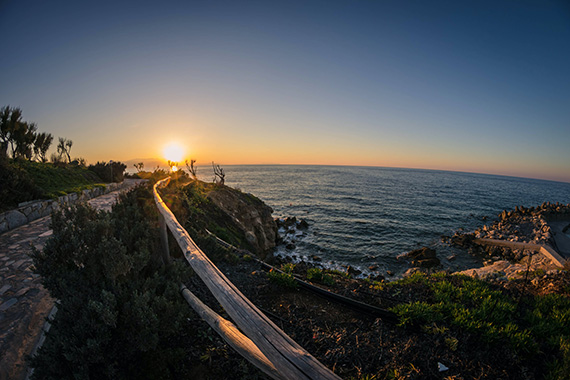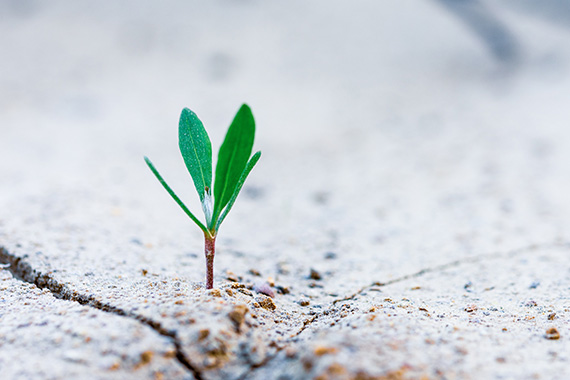First of all, what is focal length? According to the textbook definition, “focal length is measured in millimeters (mm), and it represents the distance from the optical center of a lens to the digital camera sensor when the subject of the photo is in focus.”
In plain language, this means that with a shorter focal length lens, to be able to capture a close-up of your subject, you have to be closer. Conversely, with a longer focal length lens, you can be farther away to get that same close-up shot.
Lenses can be fixed (i.e. prime) or variable, as in zoom lenses. If you look at any of your lenses, you will see, for example, a range of 18–55mm or just 50mm. The first is a variable focal length lens, and the second is a prime lens.
So how do you determine what lens you need?
First, work out what you want to photograph. If you want to photograph landscapes, buildings, and interiors, you will want to use a wide-angle lens.
If you are interested in shooting portraits or nature scenes, then you might need a telephoto lens. Somewhere in the middle–neither wide angle nor telephoto–would be a normal or standard lens.
Here are examples of the types of lenses you might choose, depending on your situation:
- Less than 21mm: super wide-angle lens
- 21-35mm: wide-angle lens
- 35-70mm: standard or normal lens
- 70-135mm: standard telephoto
- 135-300mm (or more): telephoto
- 600mm or more: super telephoto

A wide-angle lens in action. (Photo by id23.)
A wide angle lens requires everything in a scene to be reduced in size in order to fit into the image sensor, making it look as if the subject is further away from you. However, the telephoto lens will have the effect of pulling everything in your shot close to you, making subjects appear bigger.
Do you experience difficulty with blurry or out-of-focus pictures? One of the main reasons for this is camera shake. The longer the shutter speed, the more likely it is that your shots will suffer from camera shake. Most of us can’t take a shot without camera shake below a shutter speed of 1/60 of a second. You also have to use the correct shutter speed for the focal length that you want to get really sharp, in-focus photos. This is because when you magnify an image using a telephoto lens, it is also magnifying camera shake. To overcome this, set the shutter speed slightly higher than the focal length. For example, a 1/40 of a second shutter speed is good for a 30mm lens, 1/60 of a second for a normal or 50 mm, 1/125 of a second for a zoom of about 100mm, and 1/250 second for a zoom of 200mm.
Have you ever noticed photographs which have the subject in sharp focus but the background out of focus? Have you noticed other photographs where everything is in focus? This is called depth of field (DOF). Choose a shorter focal length to give you more depth of field. A 50mm lens will have more depth of field than a 200mm lens. When you increase your focal length to zoom in on a subject this decreases the amount of light entering the lens. To compensate for this, you need to widen the aperture, decrease the shutter speed, or increase the ISO.

A shallow depth of field. (Photo by Stanislav Kondratiev)
Focal length, ISO, shutter speed, and aperture all play a role in capturing an image. Focal length, to some extent, controls the amount of light coming into the lens. ISO controls the sensitivity of the image sensor. Shutter speed controls how long the image sensor captures the light. Aperture controls how much light the image sensor sees.
About the Author:
Geordie Parkin keeps a website about wildlife photography, pet photography, and general questions about digital photography (http://photopress.in/brianparkin). Parkin is a photographer based in Forest Lake, Qld in Australia.
Like This Article?
Don't Miss The Next One!
Join over 100,000 photographers of all experience levels who receive our free photography tips and articles to stay current:






The types of lensesfor each type of lens in this article; are they just for full frame cameras or APS-C also. Since the size of the APS-C sensor is different; it would be great to see the APS-C types of lenses too.
I think, there’re some misunderstood from the author:
– “focal length is measured in millimeters (mm), and it represents the distance from the optical center of a lens to the digital camera sensor when the subject of the photo is in focus.”
It’s fail. It’s “””… the distance from the optical center of a lens to the digital camera sensor when the focus point is set at infinity.”
– “” … Less than 21mm: super wide-angle lens
21-35mm: wide-angle lens
35-70mm: standard or normal lens…”
Standard lens is equal the crossing line of the sensor. The infomation of the author is only for full frame sensor, not for all the sensor of the DSLR.
– “”A wide angle lens requires everything in a scene to be reduced in size in order to fit into the image sensor, making it look as if the subject is further away from you.””
It’s only reduce the far objects, but make the close be bigger…
– “”When you increase your focal length to zoom in on a subject this decreases the amount of light entering the lens. “”
It’s only right when using a cheep zoom lens (with two aperture in largest position). But when using high grade zoom lens (with only one aprture), the light is same (or change very little) when changing focal length.
– “” Focal length, to some extent, controls the amount of light coming into the lens. ”
No, the focal length of the lens only control what be in or out of the scene, so sometime it makes change the light, but this only relates to the brighter or darker of the subject.
Thanks the author for this subject.
“Prime” lens with macro are really prime? Is there any distortion when you compare with a prime lens? Do you recommend to buy a 50mm +macro instead a 50mm?